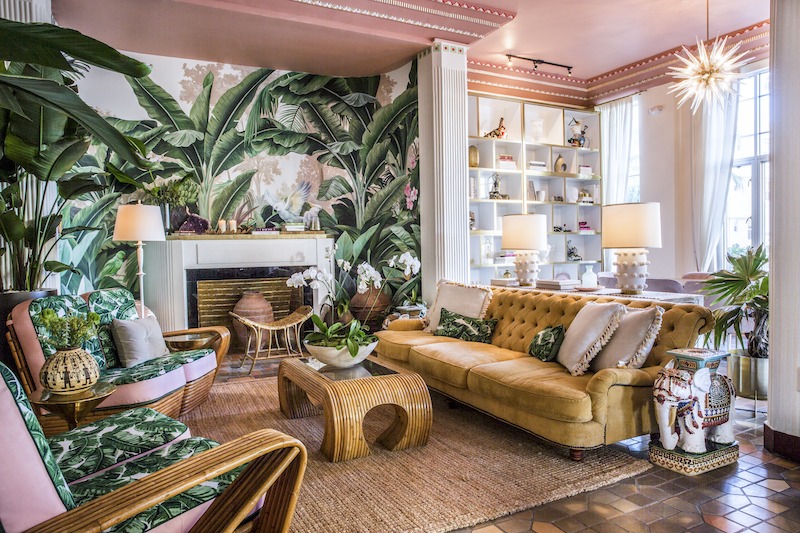The Savoy Hotel’s recent reimagining brings a Miami-meets-Palm Beach aesthetic to the traditionally Art Deco space while staying true to the property’s roots. Originally opened in 1935, The Savoy Hotel was one of the first hotels in a heavily residential area, and it has seen Miami Beach grow since its opening. Now, the refresh respects The Savoy Hotel’s historic nature while exuding classic Miami flare.
Working with the historical preservation board to ensure the important elements were retained, Modplay Studio refurbished the interiors, making changes to the hotel’s 31 suites including new wallpaper, furnishings, and curated artwork. The lobby is bright and bold, with rattan and bamboo seating. Soft pinks and green plant life impart a vibrant and nostalgic old-Miami atmosphere. Off the lobby, an intimate Café Bar with an outdoor garden is opening spring 2020. In addition to the suites and lobby refresh, the two-acre pool and cabana area were updated as well.
Close to entertainment, restaurants, clubs, museums, and more, The Savoy Hotel brings energy to the South of Fifth (SoFi) neighborhood. To create this space, Modplay Studio used several vision boards to have the property’s history, the Miami area, and the Art Deco aesthetic meet. Carlos Rodriguez, principal of Modplay Studio who worked on the reimagining, says the building was conceptualized in accordance with the historical preservation board. He adds, “We had to understand what the hotel was at one point and what it could be in the future. We had to understand what Miami needed. There are a lot of beautiful properties in Miami, but the problem is many properties don’t take the exterior of the building into the design process, which motivated our attempt at finding that marriage between the two textures.”
Miami Mural
The birds-of-paradise mural is hand-painted by a Miami artist. Rodriguez says, “We wanted to bring life and a Miami fingerprint into the lobby. The mural makes the lobby feel wider than it actually is; it has a three-dimensionality that area needed because the dark tones of the floor tend to overpower the space.”
Existing Elements
The fireplace, food, and bar are the only elements from the hotel that remain from before the refresh. “The bar is now the reception desk, and we wanted those green tones to vibrate throughout the design, where the birds of paradise would carry the rich green tones and the mural would carry the soft pinks,” Rodriguez says.
Selective Colors
To contrast with the dark brown of the floor, the Palm Beach-curated furniture was picked because of its coloring. Rodriguez says, “The light coloring of the bamboo was key to the design because we wanted it to offset the dark floor. The color had to be consistent, with a single tonality, because bamboo can be very diverse in color tone.”
Antique Collection
While there are many antiques throughout the suites, according to Rodriguez, “Several of the chandeliers are real Deco antiques. Throughout the property, we made sure to curate some furniture pieces for those lighting fixtures to nod to that important, top-notch, true Deco.”












